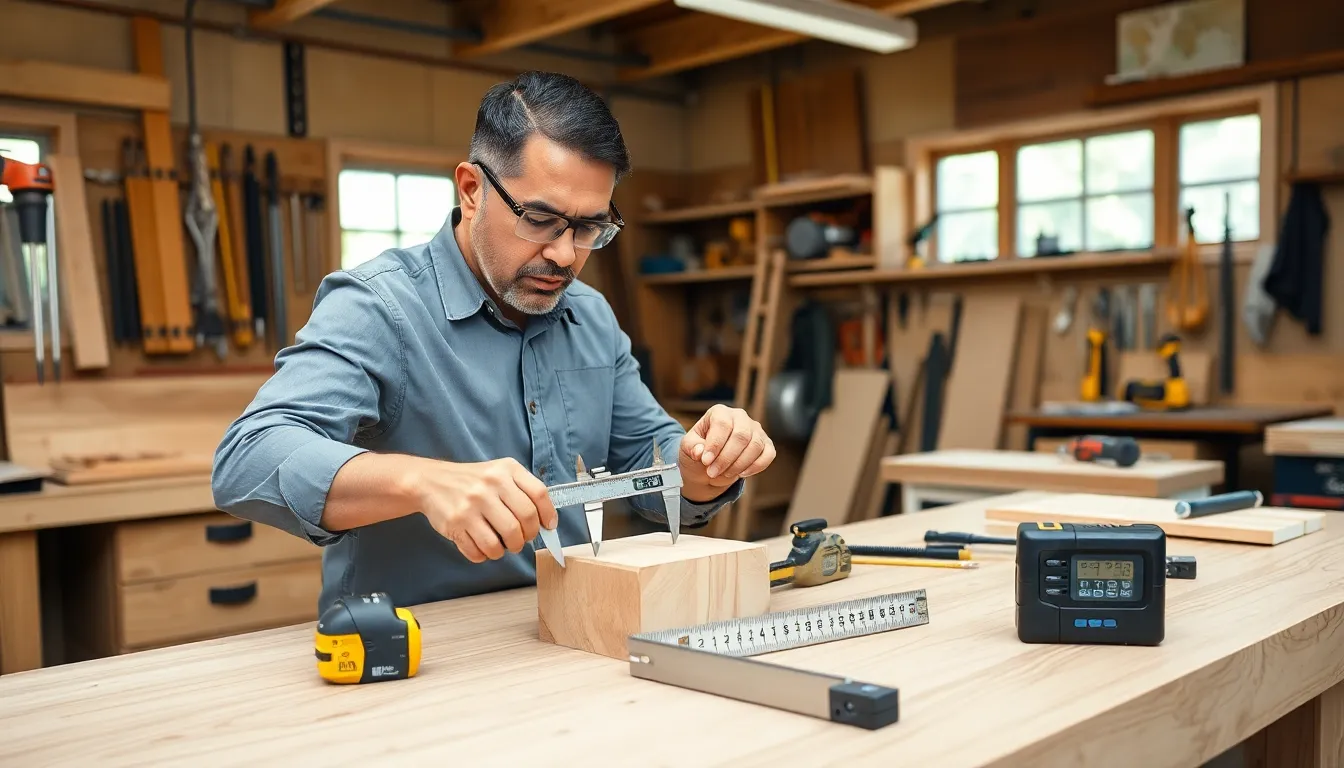In any workshop, accurate measurements can mean the difference between a masterpiece and a regrettable mishap. Imagine sawing a piece of wood only to discover it’s a couple of inches short, yikes. Not only does choosing the right measuring tools save time, but it also leads to fantastic results. From tape measures to micrometers, these tools are essential in transforming your ideas into reality. Ready to measure up? Let’s dig into the nitty-gritty of workshop measuring tools.
Table of Contents
ToggleImportance Of Accurate Measurements

Accuracy in measurements is crucial in any workshop setting. It not only ensures the quality of work but also enhances safety. When dimensions are incorrect, the risk of errors increases, which can lead to wasted materials and costly mistakes. Skilled craftsmen know that precise measurements are the bedrock of craftsmanship. Besides, getting it right the first time builds confidence and establishes a better workflow. Whether it’s cutting wood, fabricating metal, or laying out a project, ensuring everything is spot on can save time and frustration later. It’s no exaggeration to say that in the world of handiwork, accurate measurements can quite literally be the difference between success and failure.
Common Measuring Tools Used In Workshops
Several measuring tools are indispensable in the workshop. Here are the front-runners:
1. Tape Measure
A staple in every workshop, the tape measure is versatile and highly portable. It allows quick measurements of lengths and is particularly useful for larger projects. Most models feature a locking mechanism to help keep the tape extended while taking readings.
2. Caliper
Calipers offer a higher level of precision. They can measure inside and outside dimensions and even depth. Digital calipers are increasingly popular, providing easy-to-read measurements at the push of a button. Perfect for intricate tasks, these tools can make all the difference in tight tolerances.
3. Square
A square is essential for checking angles and ensuring joints fit correctly. It helps achieve 90-degree angles in woodworking and metalworking. Whether it’s framing or cabinetry, a good square can be a craftsman’s best friend.
4. Level
When it comes to ensuring that surfaces are even, a level is second to none. From construction to home improvement projects, having a level helps avoid headaches later on. A bubble level or a laser level offers users the choice depending on the complexity of the task at hand.
5. Micrometer
For those demanding ultra-precise measurements, micrometers are irreplaceable. These tools can measure small distances with great accuracy, making them ideal for tasks like machining and mechanical engineering. They may not be as common as some other tools, but for specialized work, they are invaluable.
Choosing The Right Measuring Tool For The Job
Selecting the appropriate measuring tool depends on the specifics of the task. Here are a few pointers:
- Understand Your Project Requirements: Each project has distinct needs. For general lengths and widths, a tape measure may suffice. But, for precision parts, consider a caliper or micrometer.
- Consider Material Types: Different materials may require different types of readings. For example, a level and square may be vital in wood, whereas a micrometer shines with metals.
- Think About Scale: Large-scale projects benefit from larger tools like tape measures, while small, detailed tasks need smaller tools for detailed attention.
- Check Calibration: Always confirm that your tools are calibrated. A well-maintained tool can save time and ensure project durability.
By assessing these factors, you can choose the best measuring tool to meet your project goals.
Tips For Maintaining Measuring Tools
Keeping measuring tools in prime condition is just as important as the measurement itself. Here are some simple tips to extend the life of your tools:
- Clean Tools Regularly: Dust and debris can cause measurement inaccuracies. Clean surfaces regularly, especially for calipers and micrometers.
- Store Properly: Store measuring tools in designated toolboxes or pouches to prevent damage. Avoid leaving them out in the elements, as moisture can lead to rust.
- Calibrate Annually: Regular calibration ensures the accuracy of your measurements. Many workshops schedule calibration checks on a routine basis to catch any discrepancies early.
- Use With Care: While it may be tempting to use measuring tools in ways they’re not intended, doing so can lead to damage. Handle tools gently, and don’t force them into tight spaces.
Adhering to these simple practices will keep your tools accurate and reliable.

